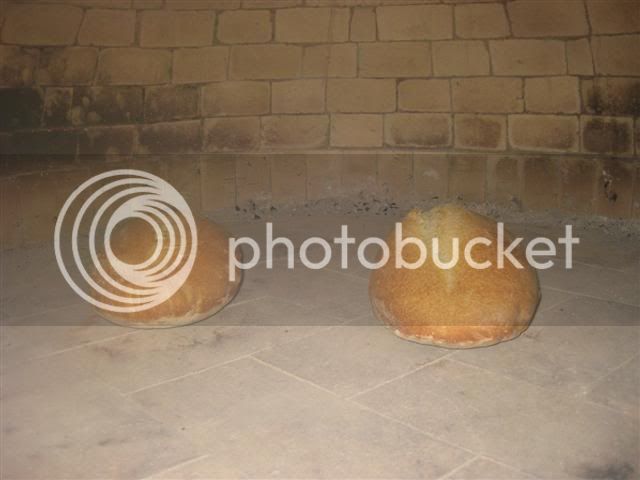I have completely stopped using commerical yeast for any of my breads. I bake about 8 loafs a week, about, so that's alot of starter.
I keep two sourdough starters, both at 100% hydration. One of them is a whole-grain starter which is fed with a mixture of rye, spelt, and whole wheat flours, I raised this one from scratch using this flour mixture. The other is my "kind of white" starter, called so because I only feed it durum wheat flour (fine grain semolina). The latter was adapted from a family starter that was gotten from a one-legged old scottish brewer friend of the family, it's unknown how old it is and acts just like a white starter, but I keep it fed with durum for doing some 100% durum wheat breads such as those that are in Daniel Leader's "Local Breads" book.
A good recipe from that very same book: Quintessential French Country Sourdough
120g ripe stiff starter (50% hydration, I use the white starter for this, feeding it a few times and getting it to 50% hydration from 100%)
350g water
350g White Flour (preferably unbleached)
120g Whole Wheat Flour
30g Rye Flour
10g salt
Mix ingredients together until a shaggy dough is formed, let rest for 20-30 mins for an autolysis. Come back and kneed dough, attempt to resist the urge to add flour, it will be fairly wet (nothing like a ciabatta dough though, I use a french fold technique). Kneed until smooth, set aside (in a bowl, on counter, whatever). Letter-fold dough twice, at 30 mins and again at one hour. Let sit until doubles in size, pre-shape, shape (makes two medium loafs or one big loaf), then score. Bake at 450F in a pre-heated oven (hopfully on a baking stone) with steam for the first 10 mins of baking. Total baking time is around 25-30 mins, bake until a deep chestnut color is achieved.
Here's an example of one of the breads I did using this recipe awhile back, but I added some sesame seeds.
































![Craft A Brew - Safale S-04 Dry Yeast - Fermentis - English Ale Dry Yeast - For English and American Ales and Hard Apple Ciders - Ingredients for Home Brewing - Beer Making Supplies - [1 Pack]](https://m.media-amazon.com/images/I/41fVGNh6JfL._SL500_.jpg)

































